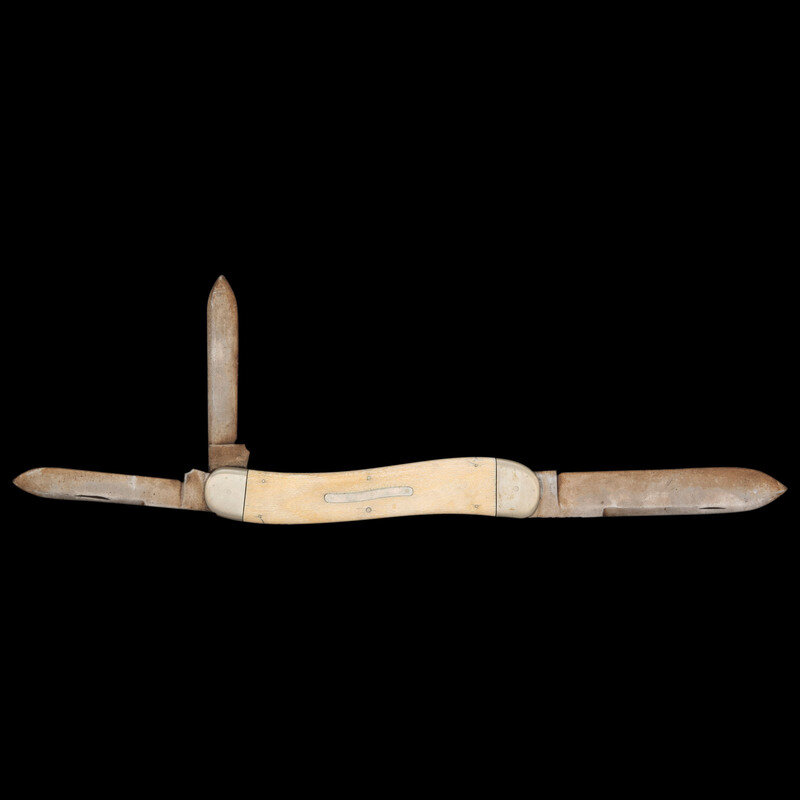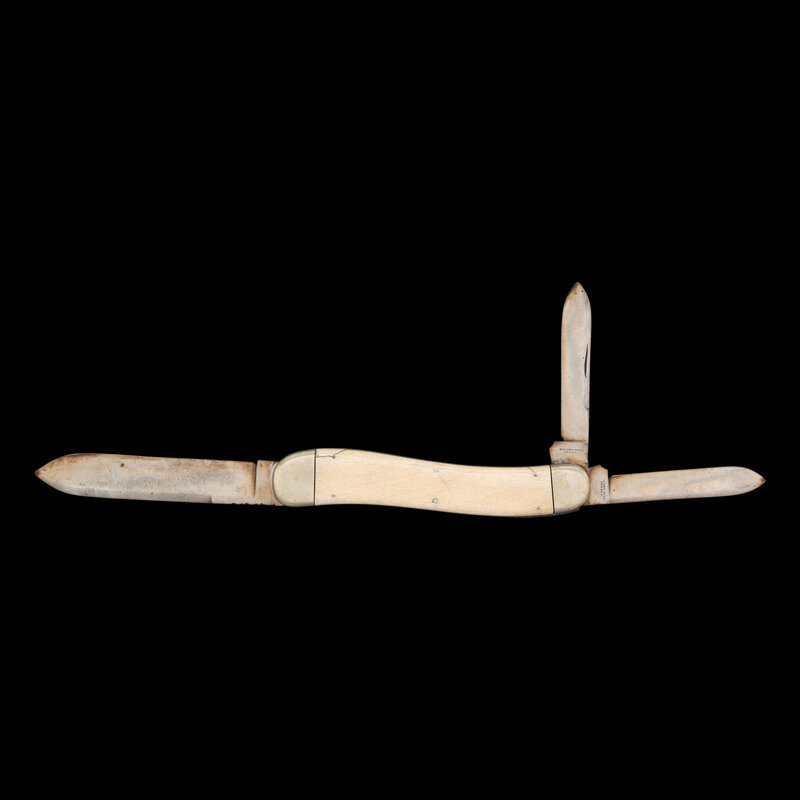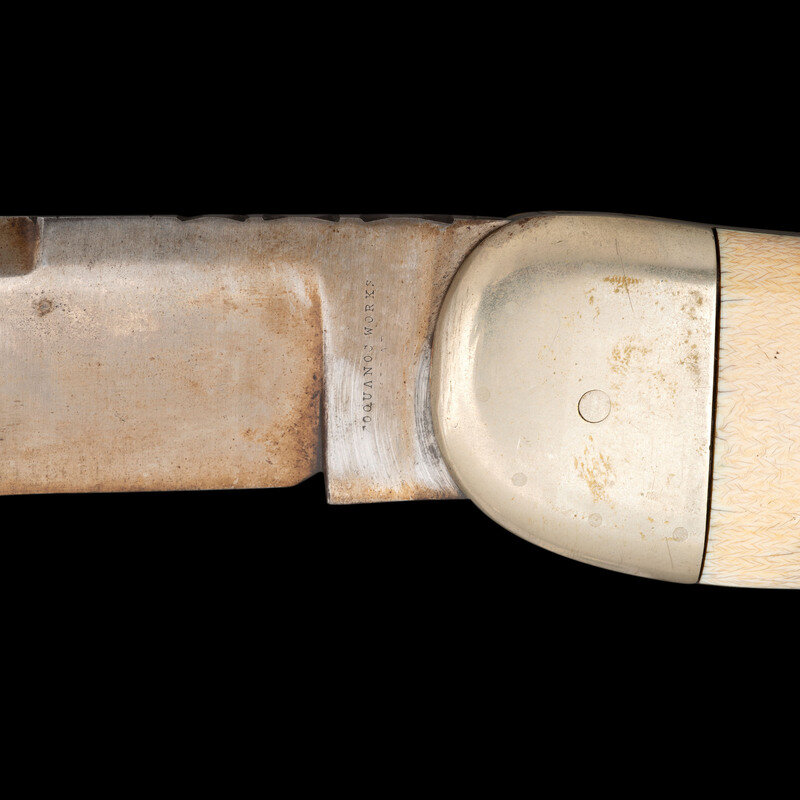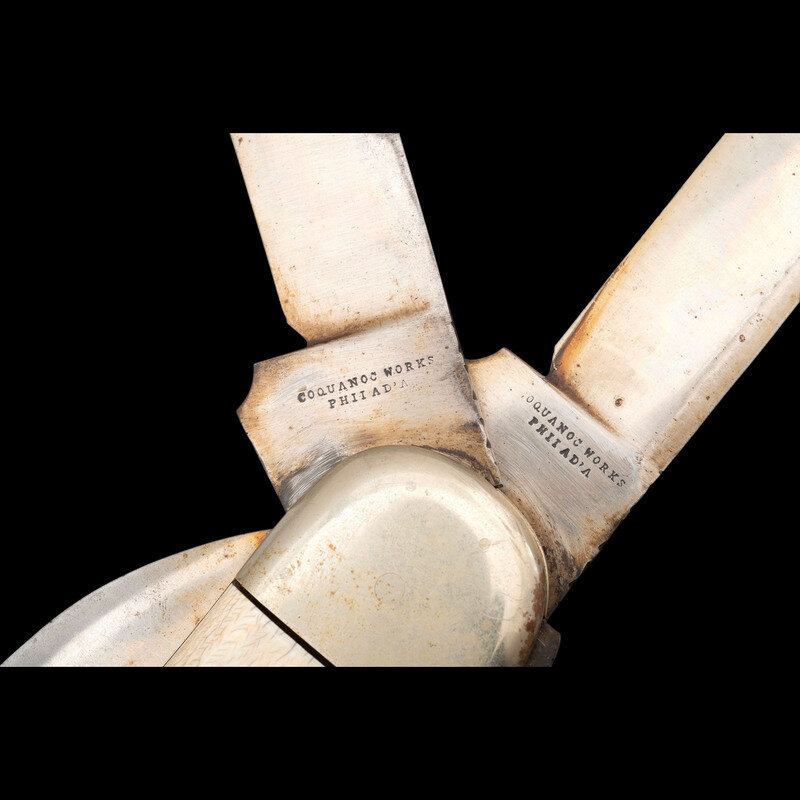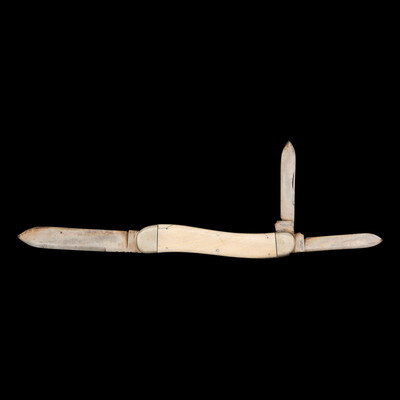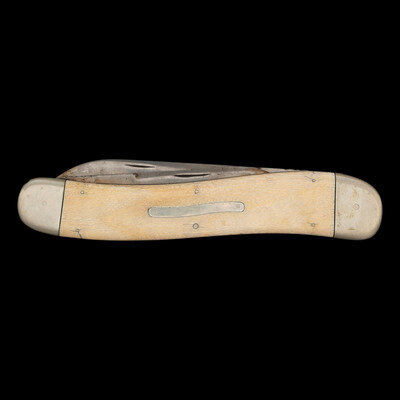Lot 87
Massive Coquanoc Works Three-Bladed Folding Knife Possibly made for the 1876 Centennial Exposition in Philadelphia
Sale 1353 - Arms, Armor and Militaria
May 1, 2024
10:00AM ET
Live / Cincinnati
Own a similar item?
Estimate
$5,000 -
8,000
Price Realized
$3,000
Sold prices are inclusive of Buyer’s Premium
Lot Description
Massive Coquanoc Works Three-Bladed Folding Knife Possibly made for the 1876 Centennial Exposition in Philadelphia
Primary blade is a single edged spear point design with a beveled spine that is 9" in length and 1.68" wide at the ricasso. The secondary blades are both single edged spear points as well, 6" in length and 1.09" wide at the ricassos. All three blades feature shallowed angled choils. The knife measures 12" closed, with the overall length being 28" when the primary and one of the secondary blades are open. The body of the knife is 2.18" wide at the wider end and 1.88" wide at the narrower end. The body of the knife is 1.07" thick and features German silver bolsters and pinned ivory scales. All three blades are marked on their ricassos in two lines: COQUANOC WORKS/PHILAD'A. A blank 3.125" long by .3" wide slightly S-shaped German silver insert is present in the reverse scale, where a name or initials could be engraved.
Little is known of the Coquanoc Works cutlery company run by Howard W. Shipley and the firm appears to have been in business for a limited amount of time in Philadelphia during the last quarter of the 19th century. The first newspaper listing found for Howard W. Shipely as a maker of "pocket knives" is on January 1, 1870 in the Philadelphia Evening Telegraph. This same paper also lists Shipley as "withdrawing" from the firm of A.B. Shipley & Sons, an importer and retailer of hardware. The March 24, 1877 issue of the Philadelphia Inquirer noted that both Howard W. Shipley and A.B. Shipley & Sons, who were located at the same address of "Commerce Street above Fifth", had temporarily suspended business due to carrying the paper of another business that had failed. A settlement of 50-cents on the dollar was accepted by the creditors and both firms were allowed to continue their business. No mention of Shipley as a knife maker can be found in the Philadelphia papers or directories after 1877. Based upon census and directory information available for Shipley, it appears he went back to work for the family hardware business as both a clerk and salesmen over the next couple of decades.
It is assumed that this knife was produced for display at the 1876 Centennial Exposition in Philadelphia as the impractical size of the knife make it more of display item than a functional one. Knives by this maker are extremely rare and for the collector of unique 19th century American knives this would certainly be an outstanding acquisition worthy of being the centerpiece of a truly advanced knife collection.
Little is known of the Coquanoc Works cutlery company run by Howard W. Shipley and the firm appears to have been in business for a limited amount of time in Philadelphia during the last quarter of the 19th century. The first newspaper listing found for Howard W. Shipely as a maker of "pocket knives" is on January 1, 1870 in the Philadelphia Evening Telegraph. This same paper also lists Shipley as "withdrawing" from the firm of A.B. Shipley & Sons, an importer and retailer of hardware. The March 24, 1877 issue of the Philadelphia Inquirer noted that both Howard W. Shipley and A.B. Shipley & Sons, who were located at the same address of "Commerce Street above Fifth", had temporarily suspended business due to carrying the paper of another business that had failed. A settlement of 50-cents on the dollar was accepted by the creditors and both firms were allowed to continue their business. No mention of Shipley as a knife maker can be found in the Philadelphia papers or directories after 1877. Based upon census and directory information available for Shipley, it appears he went back to work for the family hardware business as both a clerk and salesmen over the next couple of decades.
It is assumed that this knife was produced for display at the 1876 Centennial Exposition in Philadelphia as the impractical size of the knife make it more of display item than a functional one. Knives by this maker are extremely rare and for the collector of unique 19th century American knives this would certainly be an outstanding acquisition worthy of being the centerpiece of a truly advanced knife collection.
Property from the Collection of James Carpenter, Montague, New Jersey
Condition Report
Contact Information
Auction Specialists
